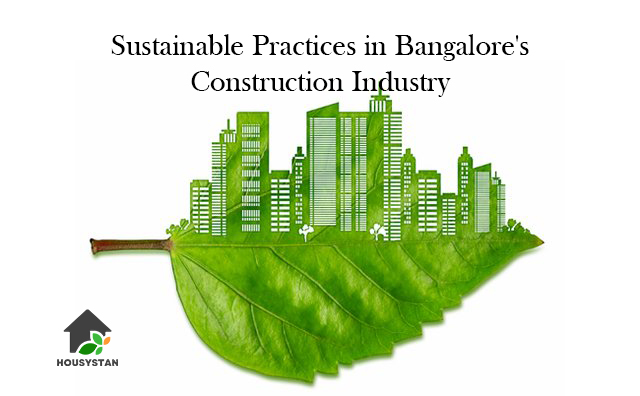Sustainable Practices in Bangalore's Construction Industry: Building a Greener Future
Read latest blogs and articles from Housystan

The Information mentioned here was last updated on:
27/11/2025Bangalore, renowned as India’s Silicon Valley, is not only a hub for technology but also a leader in pioneering sustainable construction practices. As the city experiences rapid urbanization, the construction industry in Bangalore is embracing innovative green methods to minimize environmental impact and support eco-friendly growth. By adopting sustainable building techniques, local developers are working towards reducing carbon footprints, conserving resources, and creating healthier urban environments for both current and future residents.
A key aspect of sustainable construction in Bangalore is the use of eco-friendly building materials. Many builders are now turning to recycled steel, fly ash bricks, and low-VOC paints, which help reduce waste and prevent harmful emissions. Additionally, incorporating locally sourced materials lessens transportation-related pollution, supporting the local economy while minimizing the project's overall carbon output.
Water conservation is another critical focus for Bangalore's construction sector. With water scarcity being a pressing concern in the region, green buildings are designed to include rainwater harvesting systems, dual plumbing, and efficient fixtures that significantly lower water consumption. These strategies not only preserve precious water resources but also reduce utility costs for occupants, making sustainable buildings more attractive to environmentally-conscious buyers.
- Verified Tenants/Buyers
- Unlimited Property Listing
- Zero subscription/charges fee
Energy efficiency is at the heart of Bangalore’s green construction efforts. Modern structures often feature rooftop solar panels, energy-efficient LED lighting, and advanced insulation materials that regulate indoor temperatures naturally. By optimizing building orientation and integrating smart automation systems, developers in the city enhance energy savings and contribute to a substantial reduction in greenhouse gas emissions.
Furthermore, waste management is being prioritized through effective recycling programs and on-site composting of construction debris. This approach limits landfill usage and promotes the reuse of materials, aligning with Bangalore’s vision for a greener tomorrow.
In conclusion, Bangalore’s construction industry is setting benchmarks in sustainability by integrating eco-friendly materials, water-saving solutions, energy-efficient technologies, and responsible waste management. These practices not only contribute to a cleaner, healthier city but also position Bangalore as a model for sustainable urban development in India. Builders, residents, and policymakers are collectively shaping a future where environmental stewardship goes hand-in-hand with economic growth, ensuring a vibrant and sustainable Bangalore for generations to come.